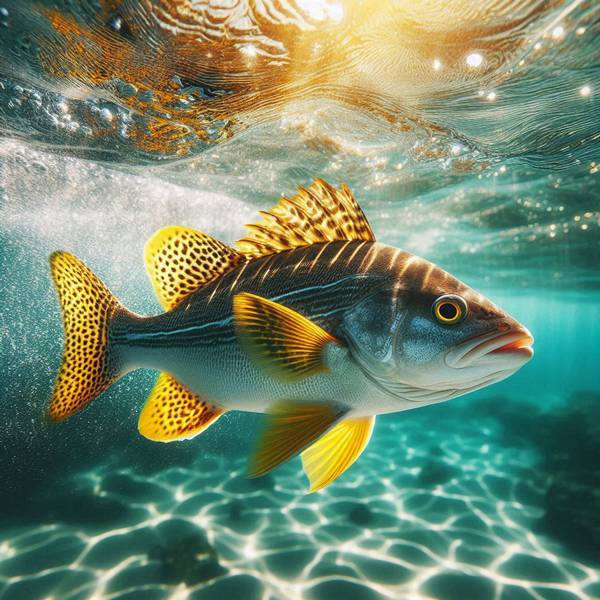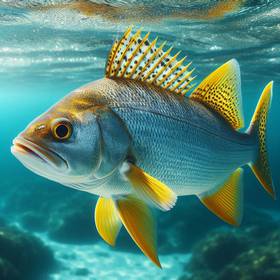Where do Weakfish Live?
Weakfish ( Cynoscion regalis ) are primarily found along the Atlantic coast of North America, ranging from Nova Scotia down to Florida and into the Gulf of Mexico.
Their core distribution lies within the mid-Atlantic region, particularly abundant in Chesapeake Bay and Delaware Bay.
They are estuarine-dependent species, meaning they rely heavily on brackish waters where freshwater rivers meet the salty ocean.
While juveniles often reside in shallower, protected areas of estuaries and coastal rivers, adults venture into deeper, more open waters of bays, sounds, and the nearshore ocean.
Their core distribution lies within the mid-Atlantic region, particularly abundant in Chesapeake Bay and Delaware Bay.
They are estuarine-dependent species, meaning they rely heavily on brackish waters where freshwater rivers meet the salty ocean.
While juveniles often reside in shallower, protected areas of estuaries and coastal rivers, adults venture into deeper, more open waters of bays, sounds, and the nearshore ocean.
Preferred Habitats
This species show a preference for sandy or muddy bottoms in areas with moderate currents and ample vegetation, such as seagrass beds and oyster reefs.
These environments provide cover from predators and a rich source of prey. They can also be found around docks, piers, and other structures that offer similar shelter and foraging opportunities.
These environments provide cover from predators and a rich source of prey. They can also be found around docks, piers, and other structures that offer similar shelter and foraging opportunities.
Seasonal Movements and Migration Patterns
Weakfish exhibit distinct seasonal movements linked to temperature and spawning. During spring, they migrate from deeper offshore waters into estuaries and coastal bays to spawn.
Spawning typically occurs from May to July in warmer, shallower waters. As water temperatures rise in summer, weakfish spread out along the coast, often moving north to cooler waters.
In the fall, they begin their southward migration back to deeper, warmer offshore waters for the winter. This migratory behavior can vary depending on location and environmental conditions.
For example, weakfish in southern regions may not undertake extensive migrations due to more stable water temperatures.
Spawning typically occurs from May to July in warmer, shallower waters. As water temperatures rise in summer, weakfish spread out along the coast, often moving north to cooler waters.
In the fall, they begin their southward migration back to deeper, warmer offshore waters for the winter. This migratory behavior can vary depending on location and environmental conditions.
For example, weakfish in southern regions may not undertake extensive migrations due to more stable water temperatures.



